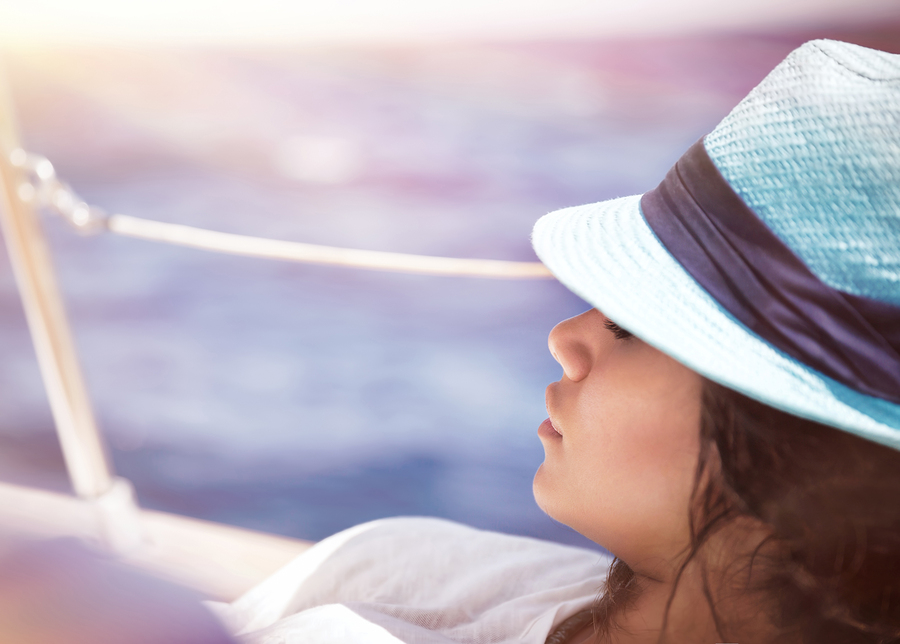

People seem to be aware of the negative effects that UV light has on the skin, but very few understand the effects that excessive UV light can have on their eyes. The tissue that makes up the human eye is some of the most sensitive tissue in the body and therefore, some of the most vulnerable. For that reason, people should take extra care when it comes to protecting their eyes from UV light.
The eye is an incredible organ with many natural defenses that protect it from the sun’s rays, including pupil dilation, the squinting reflex, and the concave shape of the eye socket, shielded by the brow. Your biology shows that the eyes are a very delicate and important part of the body. Unfortunately, the eyes’ natural defenses are not adequate in protecting them from all harmful UV radiation. Reflexes like squinting and pupil dilation are only triggered by the sun’s visible light. That means that on cloudy days, the amount of UV light reaching your unguarded eye can be dangerous.
With higher levels of UV radiation reaching the earth’s surface, it is important that people take the proper steps to protect their eyes.
Negative Effects of UV Light on The Eyes
Too much UV light is linked to multiple eye diseases, including:
- Cataracts—The leading cause of blindness in the world is when a person’s lens becomes foggy or opaque, resulting in vision loss. Up to 20% of cataracts may be a direct result of overexposure to UV radiation.
- Macular Degeneration—The leading cause of age-related blindness in the world. Overexposure to UV light greatly increases your chances of developing MD.
- Pterygium—A pink, non-cancerous growth that forms on the white part of the eyeball. It can easily become inflamed and cause discomfort. If pterygium expands to the cornea, vision may be compromised.
- Cancer of the eye—Melanoma that develops in the eye or on the eyelid can be extremely dangerous. Just like the sun causes freckles on the skin, it can cause freckles in your eye as well. Only 5 percent of people will develop a freckle in their eye. While these freckles can be harmless like freckles on the skin, they need to be monitored to make sure that they do not change in shape or size.
Exposure to UV light can also cause photokeratitis, which is basically a sunburn for the eyes. This can be extremely painful, and in the worst cases, a condition called snow blindness can occur, where vision is lost temporarily. People who ski without goggles are at a high risk for photokeratitis, as the snow can reflect up to 80 percent of UV radiation. Climbers are also at risk due to high altitudes.
How to Protect Your Eyes from UV light
A big part of protecting your eyes is being aware of the dangers that excessive amounts of UV radiation can bring. UV radiation has a cumulative effect. The eye diseases mentioned above are more likely to occur in someone who has had consistent exposure to UV radiation over time, rather than a person who gets a lot of exposure in one day. This means that all of us need to limit our exposure to UV radiation on a daily basis. If any of the following are true for you, you may be at a higher risk of damaging your eyes from UV radiation:
- spend a lot of time outdoors
- frequently participate in skiing, mountain climbing or going to the beach
- use a tanning bed
- live in the mountains or in the sunbelt
- take medicine that makes your skin and eyes more sensitive to UV radiation
Because research still needs to be done to determine how much UV light causes damage to the eyes, the American Optometric Association recommends the following to ensure adequate protection for your eyes:
- Always use quality sunglasses that block out 99-100 percent of both UV-A and UV-B radiation when outdoors.
- Stay away from tanning beds, and if you do use them occasionally, make sure to always wear eye protection. The eyelids are thin and the high levels of UV radiation that reach your eyeball in the tanning bed, even when you close your eyes, can be extremely damaging.
- If you spend a lot of time outdoors, wrap around frames can help protect your eyes from UV light from any angle.
- Be sure to see your doctor of optometry at least every two years.
Because light can enter from the side of regular sunglasses, the AOA also recommends using contact lenses that provide extra UV protection.
We hope this blog post helped you understand both the dangers of UV exposure to the eyes and ways that you can help protect your eyes from this exposure. We would love to see you at VisionFirst to help you determine the health of your eyes as well as pick out the perfect pair of sunglasses to protect your eyes this spring and summer. You can schedule an appointment online with us today!